Can You Use Tap Water to Mist Indoor Plants?
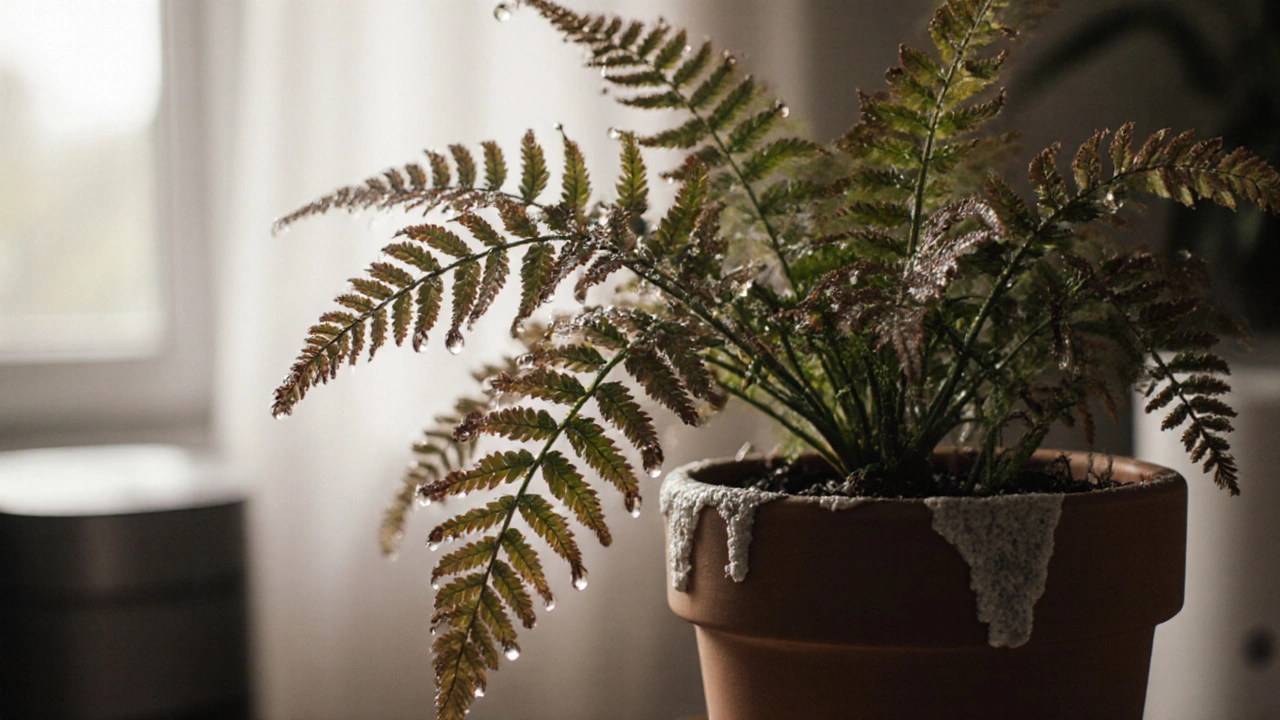
Can You Use Tap Water to Mist Indoor Plants?
Misting Water Safety Checker
Is Your Water Safe for Mistling?
Check if your water source will harm your sensitive plants
Select options to check water safety
Most people mist their indoor plants thinking it helps them thrive. But if you’re using tap water, you might be doing more harm than good-especially if your plants are sensitive. It’s not just about moisture. It’s about what’s in the water.
Why People Mist Plants
Misting is popular because tropical plants like peace lilies, ferns, and calatheas naturally grow in humid jungles. Indoors, especially in winter when heaters dry out the air, humidity drops to 20% or lower. Misting gives a quick boost-like a light rain shower. But here’s the catch: the effect lasts maybe 15 minutes. The water evaporates fast. What stays behind? Minerals, chemicals, and sometimes even tiny particles of rust or lime.What’s Really in Your Tap Water?
Tap water isn’t pure H₂O. In Auckland, where the water comes from reservoirs and aquifers, it’s treated with chlorine to kill bacteria. That’s safe for you. But plants? Not so much. Chlorine can burn delicate leaf edges, especially on plants like spider plants and bromeliads. Over time, you’ll see brown tips, curling leaves, or slow growth. You also get dissolved solids-calcium, magnesium, sodium. These build up in the soil. You might notice a white crust on the pot’s rim or the soil surface. That’s salt. It doesn’t feed your plant. It blocks roots from absorbing water and nutrients. Think of it like trying to drink through a clogged straw. In some areas, water hardness is high. Auckland’s water is moderately hard, but even that’s enough to cause problems for sensitive species like orchids or carnivorous plants. They evolved in nutrient-poor, rainwater-fed environments. Tap water feels like pouring soda on them.Which Plants Are Most at Risk?
Not all plants react the same. Here’s who suffers the most:- Ferns (e.g., Boston fern, maidenhair): Brown, crispy fronds after weeks of tap water misting.
- Calatheas and Marantas: Leaf spots, fading patterns, drooping. Their leaves are like sensors for water quality.
- Spider plants: Brown tips that spread slowly-classic chlorine burn.
- Orchids (especially Phalaenopsis): Roots turn mushy. Mist with tap water and you’re inviting root rot.
- Carnivorous plants (Venus flytraps, pitcher plants): These need pure water. Tap water kills them in weeks.

What Happens If You Keep Using Tap Water?
One misting? Probably fine. But daily misting for months? That’s when problems show up. The damage is slow. You think your plant is just aging. But it’s not. It’s slowly suffocating from salt buildup and chemical exposure. A 2023 study by the University of Auckland’s Plant Science Lab tested 12 common houseplants misted daily with local tap water for 90 days. Results: 8 of them showed measurable root stress. Two died. The survivors had 30% less growth than those misted with distilled water. You might not notice until it’s too late. By the time leaves turn brown or drop, the roots are already damaged.What Should You Use Instead?
You don’t need to buy expensive equipment. Here’s what actually works:- Let tap water sit out: Fill a jug and leave it uncovered for 24 hours. Chlorine evaporates. Not fluoride-so this helps, but doesn’t fix everything.
- Use rainwater: If you have a barrel or live where it rains often, this is ideal. Rainwater is naturally soft and free of additives. In Auckland, seasonal rains make this easy.
- Distilled or reverse osmosis water: These remove nearly all minerals and chemicals. Cheap to buy in bulk at supermarkets. Use a spray bottle for misting.
- Filtered water: A simple pitcher filter (like Brita) removes chlorine and some metals. Not perfect, but better than unfiltered tap.
Better Ways to Increase Humidity
Misting isn’t the best solution anyway. It’s a band-aid. Here’s what works longer-term:- Pebble trays: Put a tray under your plant with pebbles and water. The water evaporates slowly, raising humidity without wetting leaves.
- Group plants together: Plants release moisture through transpiration. A cluster acts like a mini humidifier.
- Use a humidifier: Especially in winter. A small tabletop model near your plant collection is more effective than daily misting.
- Keep plants out of drafty spots: Near vents, windows, or fans? That’s drying them out faster than your tap water can harm them.
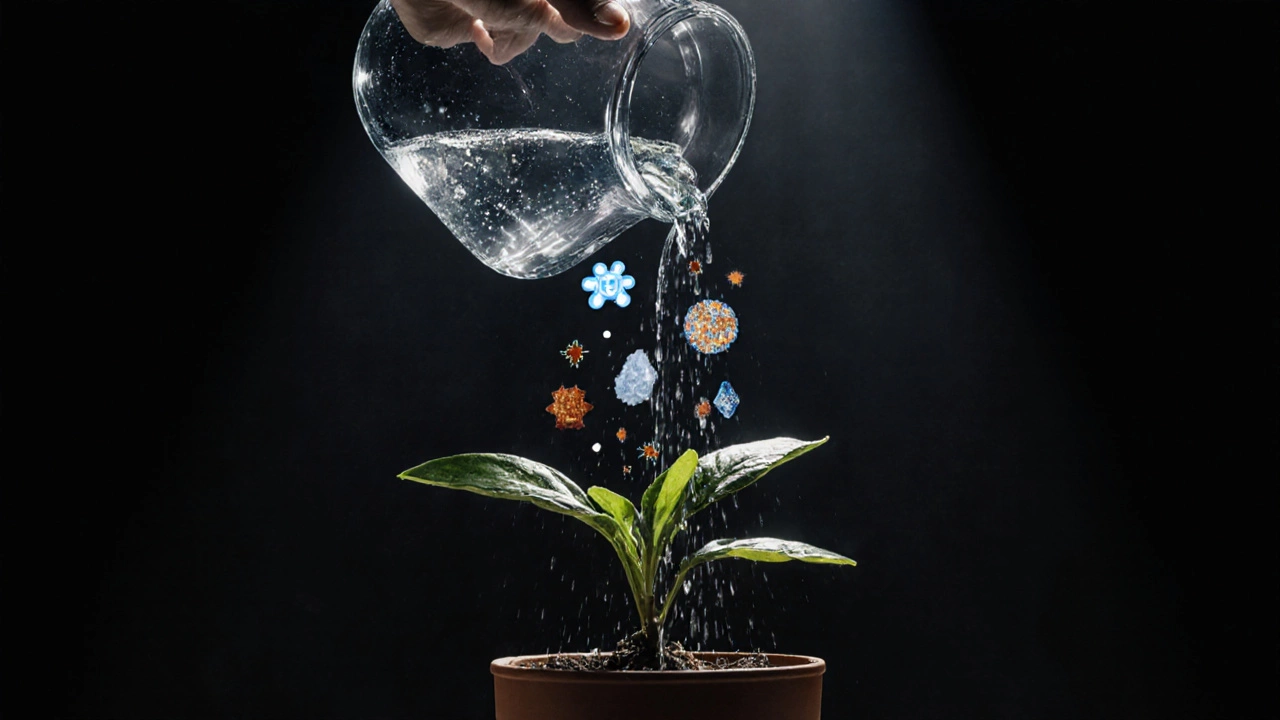
When Tap Water Is Okay
Not all plants are picky. If you have a snake plant, ZZ plant, or pothos, tap water is usually fine. These are tough survivors. They’ve adapted to ignore minor water impurities. You can mist them occasionally without worry. Even sensitive plants can handle tap water if you only water the soil-not the leaves. Mist only if you’re using clean water and doing it sparingly. For most plants, watering the soil deeply and letting it dry is better than frequent misting.Quick Test: Is Your Water Hurting Your Plants?
Do this simple check:- Look at the leaf tips. Are they brown and dry? That’s a red flag.
- Check the soil surface. White crust? That’s salt buildup.
- Feel the pot. Is it heavy after watering? If it dries out too fast, your water might be pushing salts into the root zone.
- Compare two similar plants. One misted with tap water, one with rainwater. After 3 weeks, which looks healthier?
Final Tip: Less Is More
Most people mist because they think plants need constant moisture. They don’t. Plants need consistent humidity-not wet leaves. Wet leaves invite fungal diseases like powdery mildew or leaf spot. Especially in poorly ventilated rooms. If you’re misting to help humidity, focus on the environment-not the leaves. If you’re misting because you like the sound or the ritual, that’s fine. But know this: your plant doesn’t care. It only cares if you’re giving it clean water.Can I use tap water to mist my succulents?
Succulents don’t need misting at all. They store water in their leaves and stems. Misting them can cause rot. If you must water them, soak the soil and let it dry completely. Tap water is okay for occasional soil watering, but avoid misting entirely.
Does boiling tap water make it safe for plants?
Boiling removes chlorine, but not fluoride or heavy metals. It also doesn’t reduce mineral content. Letting water sit out for 24 hours is more practical and just as effective for chlorine. Boiling is unnecessary and wastes energy.
Is bottled water safe for misting plants?
It depends. Spring water has minerals and may be worse than tap. Distilled or purified water is safe. Avoid sparkling water-it’s acidic and full of carbonation that can damage leaves. Always check the label: if it says “mineral water,” skip it.
How often should I mist my plants?
Most plants don’t need daily misting. Once or twice a week is enough for tropical species-and only if the air is very dry. For others, misting is pointless. Focus on long-term humidity solutions instead. Over-misting leads to mold and leaf rot.
Can I use filtered water from my fridge?
Yes, if it’s a carbon filter (like Brita). These remove chlorine and improve taste. But they don’t remove fluoride or dissolved salts. For sensitive plants, distilled water is still better. For most houseplants, fridge-filtered water is a good middle ground.
About
Gardener Support India is your go-to online destination for expert advice on gardening and horticultural services in India. Whether you're a beginner or an experienced gardener, our platform offers extensive resources, tips, and support tailored to Indian climates and plant species. Explore a wide range of guides on plant care, sustainable gardening practices, and innovative gardening solutions. Connect with local experts to enhance your gardening experience and maintain a flourishing garden. Our dedicated services aim to empower Indian gardeners with the knowledge and tools needed for a successful gardening journey.
Latest Posts
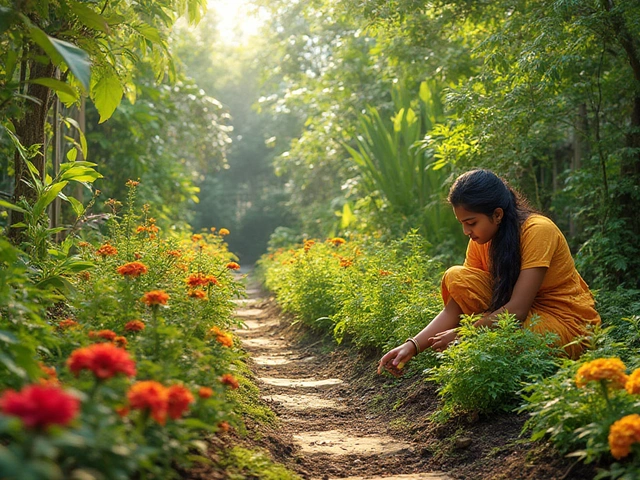

Best Topography for Growing Rice: Key Insights
By Alden Thorne Feb 21, 2025

Mastering the 30/30 Rule for Efficient Drip Irrigation
By Alden Thorne Jan 7, 2025
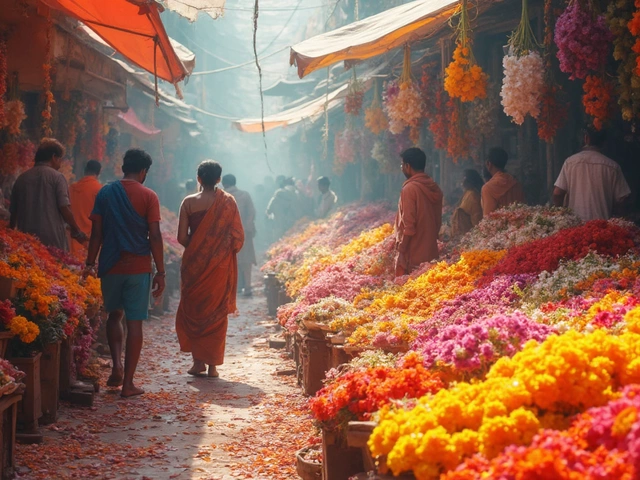
Discovering Asia's Largest Flower Market in India
By Alden Thorne Feb 25, 2025
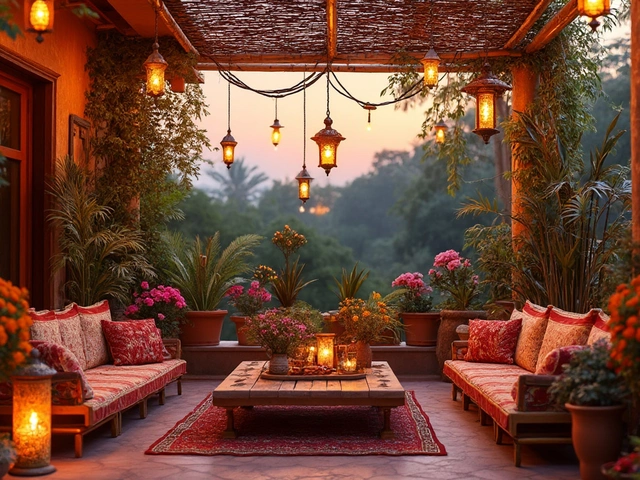
Write a comment